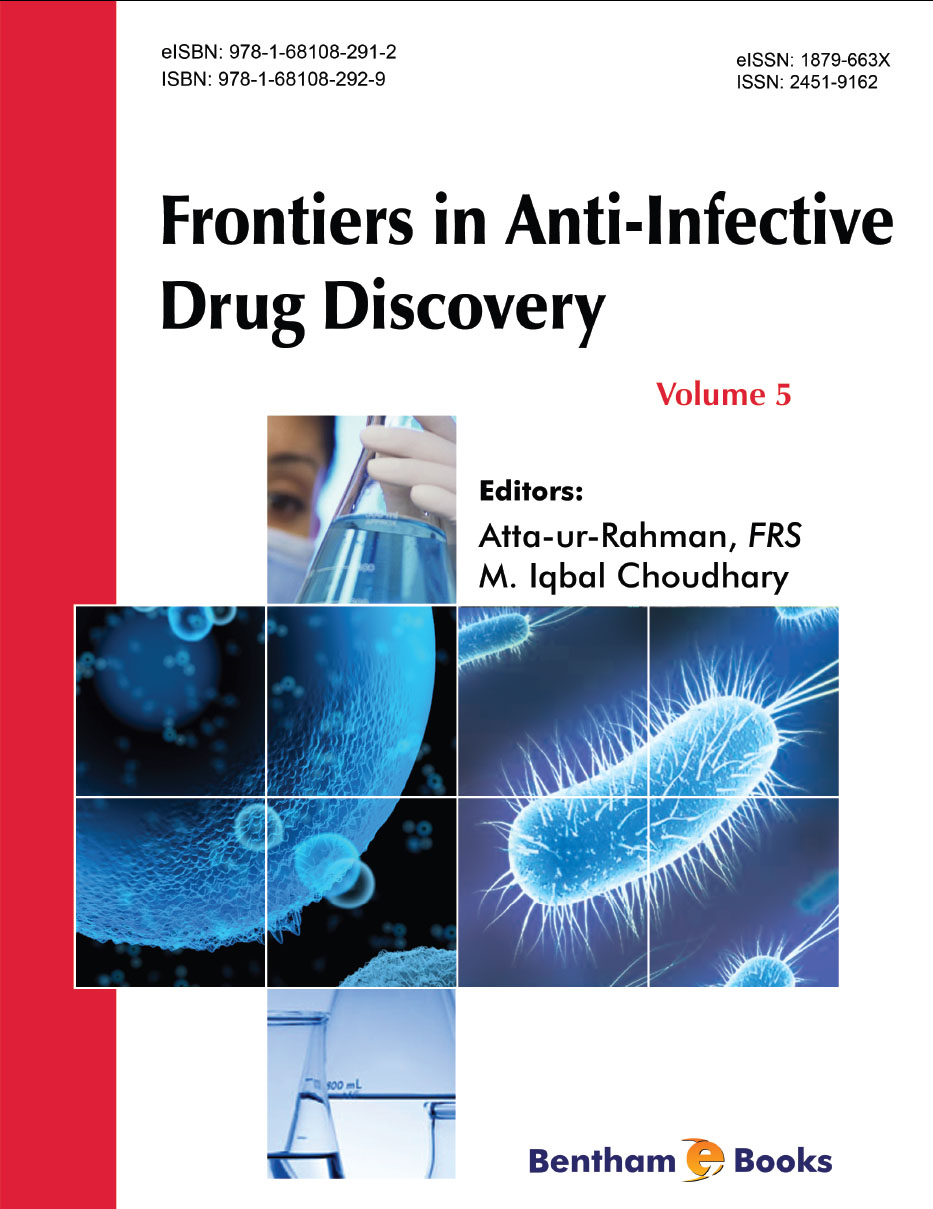Preface
Infections caused by microorganisms, viruses, and parasites are among the most important challenges faced by the human race. The UN global conference on anti-microbial resistance in 2015 highlighted the need of a global response to tackle epidemics, and emerging drug resistance. The Ebola outbreak of 2013 in West Africa resulting in a heavy death toll, exposed the weaknesses in the current global healthcare systems. Unfortunately, despite tremendous human sufferings as well as the enduring threats to human survival due to infections, the efforts of the pharmaceutical sector toward the development of new anti-infectious agents are less than adequate. Global healthcare research on infections is largely financed by the public funds, which are decreasing world over. This situation demands urgent attention of all stakeholders.
The 5th volume of the book series entitled, “Frontiers in Anti-infective Drug Discovery”, comprises six reviews focussing on three broad fields i.e. molecular mechanism of infections and target identification for drug discovery and development, the use of various natural agents and their derivatives against various infections in humans and livestock, and the use of natural antimicrobial agents in food processing. These articles are contributed by leading practitioners in this field.
Yuichi Itto has contributed a comprehensive review of the recent literature on the physics of diffusion of viruses in the cytoplasm of livings cells. The aim was to present a kinetic theory for the infection pathways of viruses in the cytoplasm of cells. The review by Furneri et al. is focused on the antimicrobial activities of essential oils of various medicinal and aromatic plants, especially against multi-drug resistance bacteria. Del Aguila et a.l have contributed a comprehensive chapter on bioactive proteins and peptides derived from food matrices, or released from microorganisms. This review described the antimicrobial properties of various protein and peptides in polymeric food matrices.
Varela et a.l reviewed the recent literature on the studies of various efflux pump protein super-families which play a key role in multi-drug resistance (MDR) in bacteria. MDR bacteria pose a major challenge in the treatment of infectious diseases. Understanding the underlying mechanism of drug resistance is the key to develop new therapies. The next chapter by Cariddi et a.l is focused on an important aspect of infectious disease prevention and treatment. This involves the use of plant based products in boosting natural defence against infections in livestock. The extensive use of antibiotics in cattle is associated with the emergence of antibiotic resistance and the release of antibiotic residues in dairy and meat products. The review emphasizes on the importance of reinforcing the natural defence against infections by using medicinal plant extracts as well as pure phytochemicals, thus decreasing the reliance and use of antibiotics. In the last chapter, Chordia and Kumar contributed an excellent review on the applications of bioinformatics, computational biology and computational chemistry in the identification of new drug target(s) in pathogenic microorganisms. These drug targets can be enzymes, receptors, ion channels and nucleic acids.
In brief, the above cited reviews contributed by leading researchers in the field make this volume an interesting and useful reading for research scientists and graduate students. We wish to express our gratitude to all the authors for their excellent and scholarly contributions for the 5th volume of this reputed eBook series. We also greatly appreciate the efforts of the entire team of Bentham Science Publishers for efficient processing and timely management of publication. The skills and efforts of Ms. Fariya Zulfiqar (Assistant Manager Publications), and leadership of Mr. Shehzad Naqvi (Senior Manager Publications) & Mr. Mahmood Alam (Director Publications) are especially praiseworthy. We also hope that like the previous volumes of this internationally recognized book series, the current compilation will also receive a wide readership and appreciation.
Atta-ur-Rahman, FRS
Kings College
University of Cambridge
UK
&
M. Iqbal Choudhary
H.E.J. Research Institute of Chemistry
International Center for Chemical and Biological Sciences
University of Karachi
Pakistan

